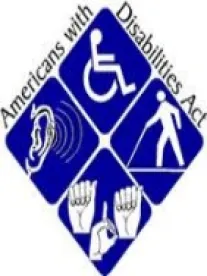On August 25, 2016, the EEOC issued its Enforcement Guidance on Retaliation and Related Issues. In addition to outlining expanded definitions of “opposition” and “participation” activity with respect to retaliation claims, the EEOC also addressed section 503(b) of the ADA. Section 503(b) makes it unlawful to “coerce, intimidate, threaten or interfere” with an individual who attempts to exercise ADA rights or one who assists or encourages others to do so.
What Makes ADA Interference Different
In its guidance, the EEOC notes the interference provisions of the ADA are broader than the statute’s anti-retaliation provisions. Specifically, actions that may not be materially adverse for a retaliation claim may suffice for an interference action. Another distinguishing feature of an ADA interference claim, according to the agency, is that an individual pursuing relief need not be a qualified person with a disability.
Examples of ADA interference provided in the guidance includes the following:
-
requiring an unlawful pre-employment medical examination (regardless of whether the person is offered the job or disabled);
-
having a policy that limits an employee’s ADA rights (such as a fixed leave policy providing for no exceptions); or
-
engaging in practices that would discourage applicants or employees from pursuing accommodations or positions that would require accommodations.
The EEOC has indicated that the following fact patterns constitute interference:
-
After an employee requests from HR an accommodation of telecommuting, her manager tells her that if she drops her formal request, the manager will allow her to work at home on an informal basis; if she does not drop her formal request, the manager threatens to tell HR that the job an only performed on site.
-
After a former employee is denied an accommodation, he files a charge of discrimination. The EEOC requests names and contact information of dozens of similarly situated employees as part of its investigation. Before giving the names of the employees to the EEOC, the company writes letters to the employees, identifying the charging party by name, stating he had filed a charge of discrimination under the ADA and describing his medical restrictions. The company also offered the similarly situated employees to have a company attorney present in the event an EEOC investigator conducted interviews. The EEOC viewed the employer’s actions as coercive and interfering with the similarly situated employees’ rights to exercise their ADA rights.
Why It Matters
These broader protections should concern employers. The EEOC has invoked ADA interference protections in recent class-based litigation against employers. Additionally, in 2015, the EEOC pursued more disability-related litigation than any other kind. And disability related policies and practices fall under two of the six enforcement priorities in the EEOC’s strategic enforcement plans for fiscal years 2012 to 2016 and fiscal years 2017-2021.
The EEOC’s expansion of ways to pursue disability-related relief on a class-wide basis – regardless of whether one is a qualified person with a disability – should make a proactive review of practices impacting ill, injured, and pregnant workers a priority for employers.





 />i
/>i
